 |
 |
 |
| |
In Vitro Selection Strategy and Characterization of Resistance to a Novel Highly potent HIV Protease Inhibitor SPI-256
|
| |
| |
Reported by Jules Levin
XV HIV Drug Resistance Workshop
June 13-17, 2006
Sitges, Spain
E Afonina, S Gulnik, H Yokoe, and J Erikson
Sequoia Pharmaceuticals Inc, Gathersburg, MD, USA
AUTHOR CONCLUSIONS:
- Selection of virus resistant to SPI-256 starting from both wild type and MDR PI resistant viruses was a very slow process and required multiple passages with small incremental increases of concentration.
- I50V appeared to be a common mutational escape pathway to SPI-256 for WT as well as highly divergent, MDR PI-resistant viruses.
- SPI-256 retained nanomolar potency against all selected mutants (range 9- 170 nM).
- SPI-256 is potent against TPV resistant MDR mutants. Surprisingly, selected SPI-256 resistant viruses became sensitized to TPV.
- These results support the potential use of SPI-256 in both first-line and salvage therapy regimens.
Methods
Antiviral activity of SPI-256 was evaluated by a cytotoxicity assay in MT-4 cells
infected with wt (HXB2) HIV-1 or recombinant multidrug resistant HIV-1
mutants.
In vitro selection experiments were performed by passaging WT-HXB2 HIV or
MDR-HIV patient-derived isolates (M4 and M7) in MT4 cells, in the presence of
increasing concentrations of SPI-256. Both M4 and M7 contained numerous PIresistance mutations, were sensitive to SPI-256 (IC50s of 19 and 1 nM,
respectively), and were highly cross-resistant to FDA approved PIs (IC50 range
0.08-8 uM). Virus growth was monitored by p24 gag ELISA.
Viral RNA was extracted from passaged virus and 1000 bp PCR fragment
containing protease region and p7/p1 gag and p1/p6 gag cleavage sites was
subjected to population and clonal sequencing.
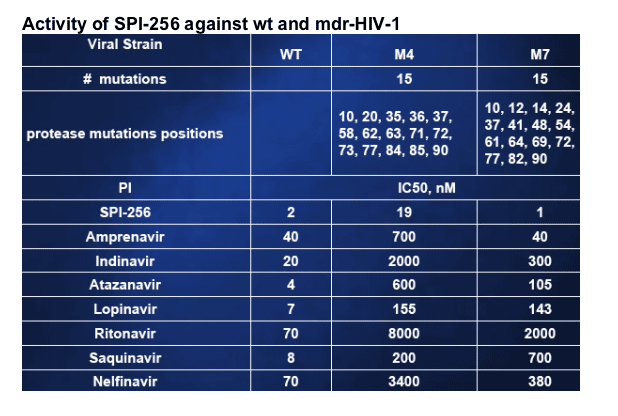
Resistance selection experiments:
In vitro biochemical and antiviral studies show that most of the single PI mutants thus far identified were suppressed in the presence of SPI-256.
Thus, the barrier to emergence of drug resistance along any of the commonly observed evolutionary pathways should be high.
After several unsuccessful attempts to propagate virus in the presence of increasing concentrations of SPI-256, a strategy was adopted whereby virus would be initially grown at concentration equal to the IC50 of SPI-256 and drug concentrations would be increased in very small increments (less than 0.5x increase).
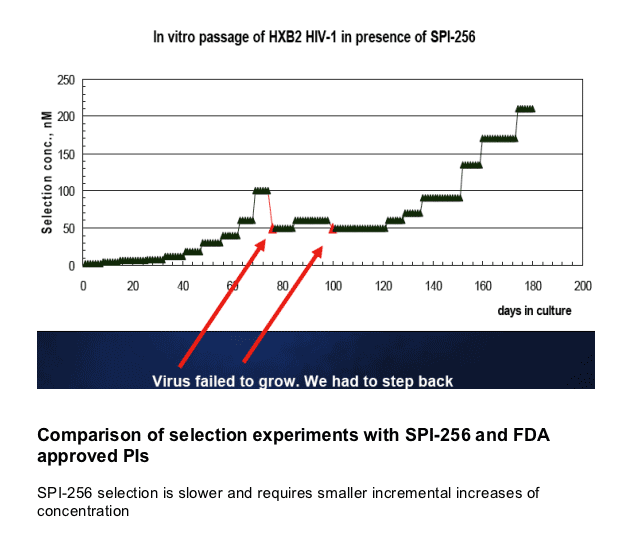
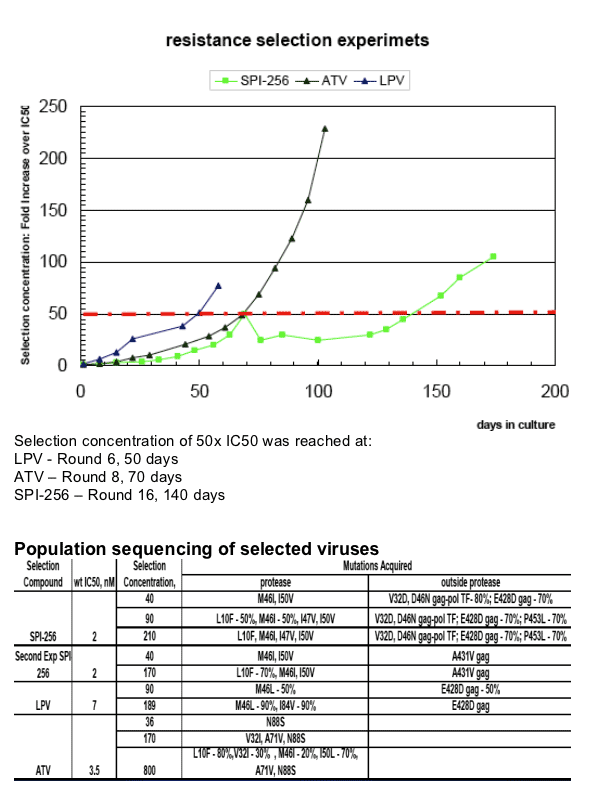
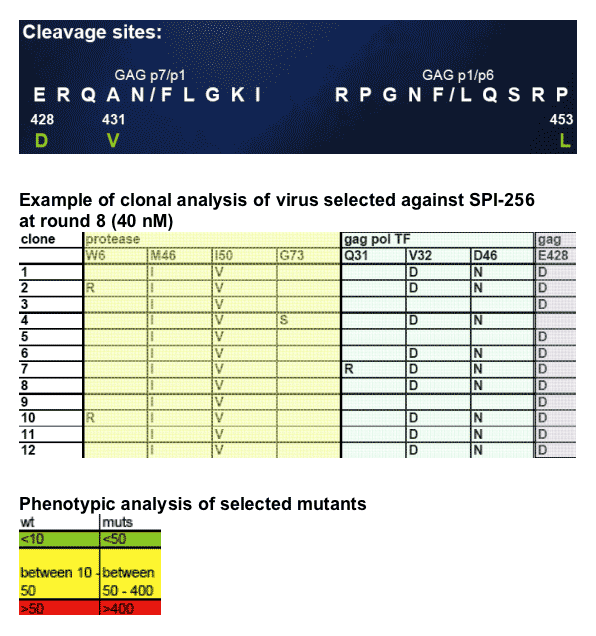
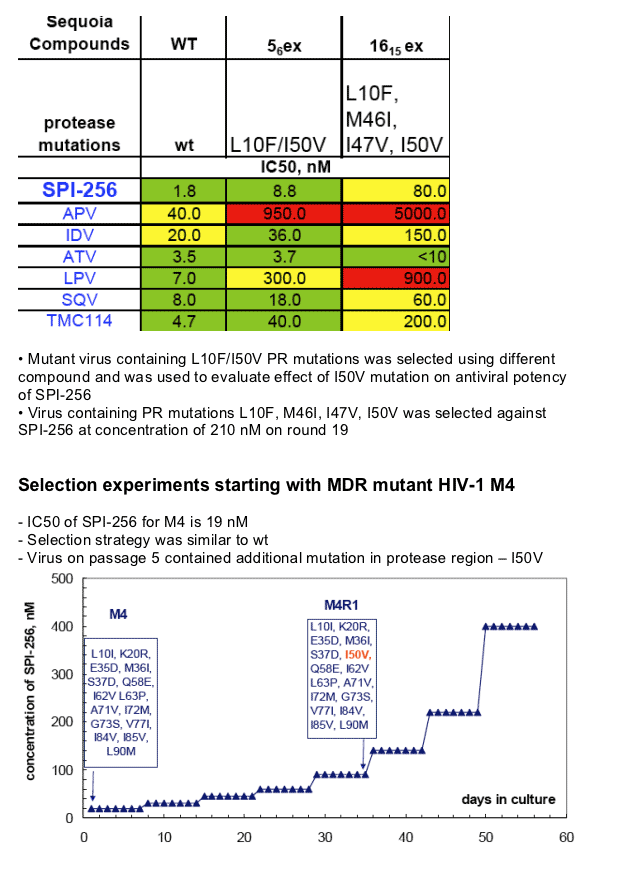
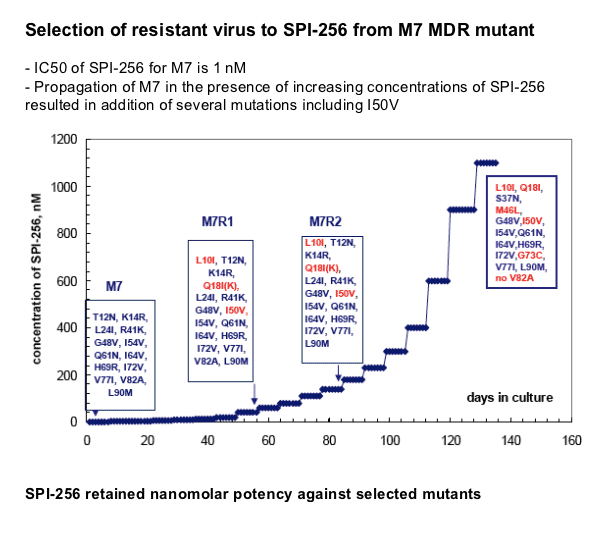
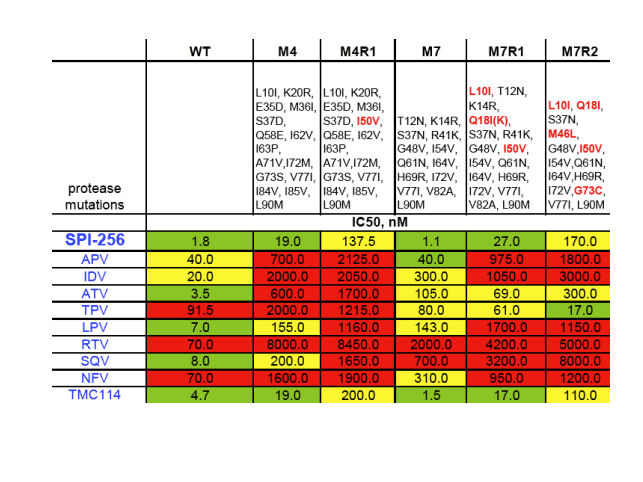
|
| |
|
 |
 |
|
|